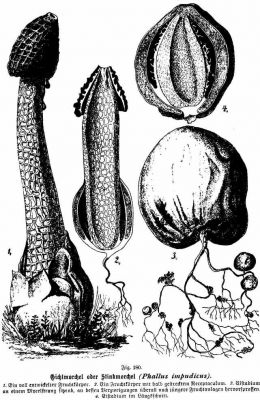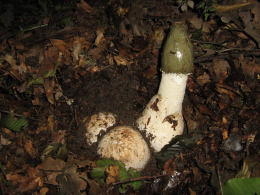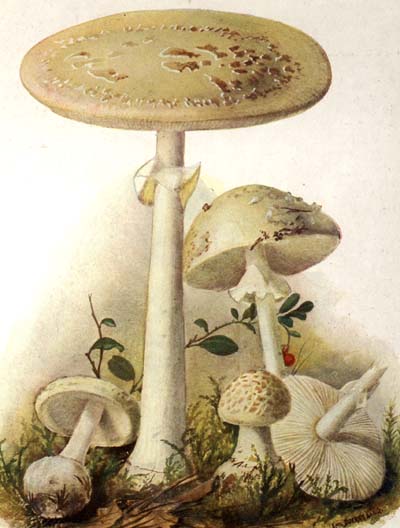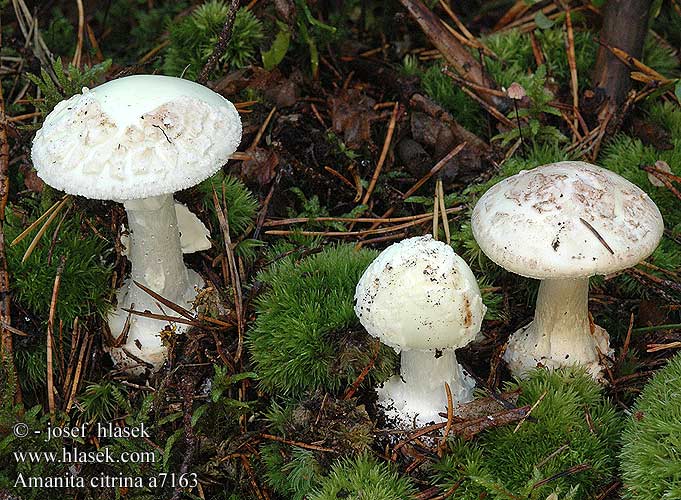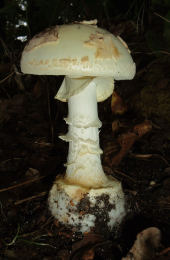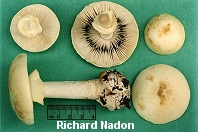Phallus impudicus, commonly known as the
common stinkhorn, is a widespread fungus recognizable for its foul odor and its phallic shape when mature. It is a common mushroom in Europe and western North America, where it occurs in habitats rich in wood debris such as forests and mulched gardens. It appears from summer to late autumn. The fruiting structure is tall and white with a slimy, dark olive colored conical head. Known as the gleba, this material contains the spores, and is transported by insects which are attracted by the odor – described as resembling carrion.
The dispersal of spores is different from most "typical" mushrooms that spread their spores through the air. Stinkhorns instead produce a sticky spore mass on their tip which has a sharp, sickly-sweet odor of carrion to attract flies and other insects. Odorous chemicals in the gleba include methanethiol, hydrogen sulfide,
linalool,
trans-ocimene, and phenylacetaldehyde.
The mature fruiting bodies can be smelled from a considerable distance in the woods, and at close quarters most people find the cloying stink extremely repulsive. The flies land in the gleba and in doing so collect the spore mass on their legs and carry it to other locations.
An Austrian study demonstrated that blow-flies (species
Calliphora erythrocephala,
Lucilia caesar,
Lucilia ampullacea and
Dryomyza analis) also feed on the slime, and soon after leaving the fruit body, they deposit liquid feces that contain a dense suspension of spores.
The study also showed that beetles (
Oecoptoma thoracica and
Meligethes viridescena) are attracted to the fungus, but seem to have less of a role in spore dispersal as they tend to feed on the hyphal tissue of the fruiting body.
At the egg stage, pieces of the inner layer (the
receptaculum) can be cut out with a knife and eaten raw. They are crisp and crunchy with an attractive radishy taste. The fungus is enjoyed and eaten in France and parts of Germany, where it may be sold fresh or pickled and used in sausages.
Similar species are consumed in China.
In Northern Montenegro, peasants rub
Phallus impudicus on the necks of bulls before bull fighting contests in an attempt to make them stronger. They are also fed to young bulls as they are thought to be a potent aphrodisiac.
Writing about life in Victorian Cambridge, Gwen Raverat (granddaughter of Charles Darwin) describes the 'sport' of Stinkhorn hunting:
In our native woods there grows a kind of toadstool, called in the vernacular The Stinkhorn, though in Latin it bears a grosser name. The name is justified, for the fungus can be hunted by the scent alone; and this was Aunt Etty's great invention. Armed with a basket and a pointed stick, and wearing special hunting cloak and gloves, she would sniff her way round the wood, pausing here and there, her nostrils twitching, when she caught a whiff of her prey; then at last, with a deadly pounce, she would fall upon her victim, and poke his putrid carcase into her basket. At the end of the day's sport, the catch was brought back and burnt in the depest secrecy on the drawing-room fire, with the door locked; because of the morals of the maids.
***********








































